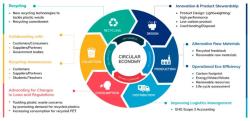Is dry cleaning harmful to the environment?
Dry cleaning processes, particularly those that use traditional solvents like perchloroethylene (PERC), have raised environmental concerns due to the potential negative ecological impact. Here are some key factors to consider regarding the environmental impact of dry cleaning:
1. Solvent Use and Emissions:
- Traditional dry cleaning methods, which rely on solvents like PERC, release volatile organic compounds (VOCs) into the air. VOCs can contribute to air pollution and may have adverse health effects on humans.
- Some VOCs, including PERC, are classified as hazardous air pollutants (HAPs) under U.S. environmental regulations due to their potential to harm both the environment and public health.
2. Groundwater Contamination:
- Spills and improper disposal of dry cleaning solvents can lead to soil and groundwater contamination. PERC, in particular, is known for its ability to leach into the ground and contaminate drinking water sources.
- Contaminated groundwater poses risks to aquatic ecosystems and can impact nearby communities.
3. Energy Use:
- Dry cleaning machines, especially those that use traditional methods, can be energy-intensive. High energy consumption contributes to greenhouse gas emissions if the energy source is not renewable or low-carbon.
4. Waste Generation:
- Dry cleaning generates waste in the form of used solvent, filters, and sludge. Proper disposal of these waste materials is essential to prevent environmental harm.
- Filters that capture residual PERC can be classified as hazardous waste and require special handling and disposal.
5. Alternative Solvents and Processes:
- To mitigate the environmental impact, many dry cleaners have transitioned to alternative solvents and cleaning processes. These include hydrocarbon-based solvents, silicone-based solvents, and wet cleaning, which are generally less harmful to the environment and human health.
- Green dry cleaning methods aim to reduce or eliminate the use of toxic chemicals, VOC emissions, and waste generation.
6. Regulatory Compliance:
- Environmental regulations vary by region, but many jurisdictions have implemented strict controls on dry cleaning operations to limit emissions, enforce proper waste management, and protect groundwater.
7. Consumer Awareness:
- Increased consumer awareness of environmental issues has led to a growing demand for eco-friendly dry cleaning alternatives. Some consumers actively seek out dry cleaners that use environmentally friendly practices and solvents.
In summary, the ecological impact of dry cleaning largely depends on the type of solvents and processes used. Traditional dry cleaning methods involving PERC have raised significant environmental concerns due to air emissions, groundwater contamination, and waste generation. To address these issues, many dry cleaners have transitioned to alternative solvents and more environmentally friendly practices. Consumers can also play a role by choosing eco-friendly dry cleaning options and supporting businesses that prioritize environmental sustainability.









